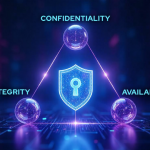
What is cybersecurity?
17 de July de 2025
Least Privilege Enforcement (LPE): A Technical Foundation for Secure and Sustainable Access Management
31 de July de 2025In modern cybersecurity, every unnecessary access represents a potential breach. Just-In-Time Access (JIT) stands out as one of the most effective strategies to minimize privilege exposure, limit lateral movement, and maintain a minimal attack surface—without compromising operational efficiency or team agility.
What is JIT Access and How Does It Work?
Just-In-Time (JIT) access is a privilege control model that eliminates permanent access and instead grants permissions in a temporary, dynamic, and auditable way, based on contextual conditions.
From a technical perspective, a JIT system must:
- Avoid persistent privilege assignment:
Privileged accounts should not have continuous access. Instead, privileges are elevated only when needed, for a limited duration, and then automatically revoked. - Operate on-demand:
The user requests access to a specific resource. The system evaluates whether security requirements are met (MFA, context, time, identity, device) and if the request complies with the parameters defined by granular access policies. - Generate ephemeral credentials or temporary tokens:
Access is granted using short-lived keys, certificates, or contextual elevation, ensuring that privileges do not outlive the session. - Be traceable and auditable:
Every privilege grant must be logged, including when, who, how, and why access was granted. This is key for regulatory compliance and post-incident analysis.
Why is JIT a Logical Response to the Current Threat Landscape?
The cybersecurity model has drastically evolved. Networks are no longer contained, users are not trusted by default, and threats do not distinguish between legitimate or hijacked access.
The most damaging attacks (ransomware, APTs, industrial data manipulation, digital sabotage) rely on persistent access. An attacker with valid credentials and unlimited time is a ticking time bomb. This is where JIT comes in:
- Breaks access continuity:
Without persistent credentials, attackers must obtain privileges at the exact moment they’re needed—dramatically reducing the exploitation window. - Reduces lateral movement:
If access is granted only on-demand and for specific timeframes, attackers can’t use compromised accounts to move across systems. - Neutralizes stolen credentials:
Stolen passwords expire or are rotated after each use. In many JIT models, users never even see the credential. - Enables contextual control:
Access is granted only if the device is patched, the user is in the correct location, and the risk level is low. Access from unmanaged devices or locations can be denied.
Real-World JIT Applications in Critical Infrastructure, OT, and IT
In industrial and critical infrastructure environments (energy, transportation, water, telecommunications), JIT is especially powerful:
- Scheduled maintenance:
Technicians receive access to PLCs, SCADA, HMIs, or control servers only during an approved window. Outside that timeframe, the system remains locked. - Third-party vendor management:
External parties can access only specific assets, for a limited time, and from a controlled environment (e.g., VDI, encrypted tunnel, hardened workspace). This eliminates the risk of permanent tunnels or backdoors. - Insider threat mitigation:
Privileges don’t exist until they are requested and approved. A malicious insider must justify each access and knows every action will be audited.
Technological Models for Implementing JIT
JIT access is not implemented in just one way. Some key technologies and practices include:
- Privileged Access Management (PAM) with time control:
Integration with Active Directory, LDAP, credential vaults, and real-time session control. - Privileged Identity Management (PIM) in cloud environments (Azure, AWS, GCP):
Allows ephemeral, reviewable elevation of IAM roles. - Zero Trust systems with access brokers or Software Defined Perimeter (SDP):
Access is granted only after real-time contextual evaluation. - Automation and approval workflows:
ITSM tools or policy engines that require request validation before granting privileges—integrated with MFA, DLP, or EDR. - Session containers or virtual desktops:
User interaction is encapsulated in a remote, isolated environment without direct access to native protocols or sensitive systems.
Advantages Over Traditional Models
| Feature | Traditional Model | JIT Model |
| Access | Permanent | Temporary |
| Control | Static | Dynamic / Contextual |
| Credentials | Persistent | Ephemeral / Rotated |
| Auditing | Manual or Partial | Continuous and Centralized |
| Attack Exposure | High | Minimal (Very Short Windows) |
| Regulatory Compliance | Hard to Demonstrate | Fully Traceable |
Compliance and Regulations Requiring or Recommending JIT
An increasing number of regulations include principles of least privilege and time-bound access, which align with JIT:
- NIS2 (EU):
Requires on-demand access, traceability, and privilege control (Articles 21 and 23). - ISO/IEC 27001/27002:
Time-, need-, and role-based access control (Clauses A.9 and A.12). - NIST SP 800-53 & SP 800-171:
Controls AC-2 (Account Management) and AC-5 (Separation of Duties). - ENS (Spain’s National Security Framework):
Principles of authorized access and surface exposure minimization.
Additionally, frameworks like NIST’s Zero Trust Architecture (ZTA) and ISA/IEC 62443 guidelines for OT systems recommend minimizing persistent access.
The Future: JIT as the Foundation of Zero Standing Privileges (ZSP)
The clear trend in enterprise cybersecurity is to move toward a ZSP (Zero Standing Privileges) model—where no privileges exist by default. Access is granted only when needed, under strict conditions, and for the minimum necessary time.
JIT is not a trend—it’s the tool that makes this model possible. It eliminates overexposure, reduces the attack surface, and turns access management into a conscious, measurable, and reviewable process.
How to Effectively Implement JIT? Endurance
Implementing a JIT model requires technology, but also organizational culture. Tools alone are not enough—roles, request and approval policies, contextual control mechanisms, and a solid auditing system must be established.
In this journey, solutions like Endurance by Cosmikal orchestrate the entire JIT lifecycle—from request to revocation—with a secure, traceable, and non-intrusive access model that integrates seamlessly across both IT and OT environments.




